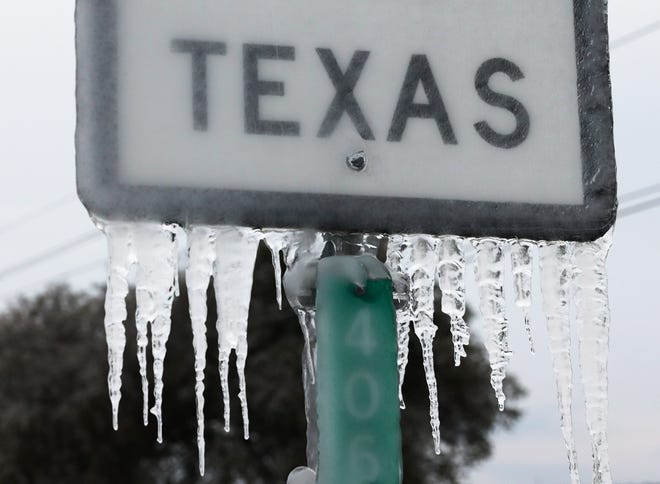We’re All in this Together: How to Help Texas
March 20, 2021
News broadcasts over the past several weeks have been dedicated to the extreme winter storms that had been sweeping across the nation. But nowhere have the effects of this storm been felt more than in Texas. The average snowfall across the state was 2-5 inches, with some areas seeing over 9. This may not seem like a big deal to Northern states, but for Texans, where it very rarely snows, the blizzard was unexpected and communities were very unprepared for what was to come. Most snow occurred on Sunday, February the 13th and the following Monday. With no time to melt, another storm rolled in on Tuesday and Wednesday.
Trouble began when freezing rain led to slick and dangerous road conditions. Drivers, inexperienced in this weather, caused numerous accidents. The largest of these was a pileup of over 100 cars on Interstate 35 West. Conditions worsened, and snowfall caused widespread power outages across the state. Power plants in the states were caught off guard when many turned up their heat during the freezing temperatures. Companies were starkly unprepared for the increased demand for gas and heat causing the freezing of pipelines and a statewide blackout.
Majority of Texas was left without electricity and many were unused to the harsh conditions. The storms were followed by several deaths from hypothermia, drownings, and car crashes. Another prominent cause of death during this time was death by carbon monoxide. Desperate people idled their car in an enclosed space looking for some heat or a place to charge their devices and accidentally passed away from carbon monoxide poisoning. Hospitals were having a difficult time tending to patients with these outages on top of the pandemic.
With electricity halted, people cannot get running water, nor can they traditionally heat their water. Citizens have been unable to cook, bathe, or use the toilet. People are also having problems finding food for their families. Perishable food was unusable after a few days, and many supermarkets are closed. Food banks can only feed so many and are giving away as much as they can.
So how can residents in New Jersey and across the rest of the country help those in Texas? One big way is donating money for food. The Houston Food Bank is open for donations, stating that a donation of $50 can provide about 150 meals. The Austin Disaster Relief Network is another organization looking for donations to help during this crisis. Temporary shelter, gift cards, and supplies will be provided by donation. Other places to donate money include North Texas Food Bank, the San Antonio Food Bank, and Feeding Texas, an organization that works with smaller local food banks.
More efforts are at organizations such as Front Steps, located in Austin, which is working to help homelessness during this time and all the time. People can donate money or blankets. They say that blankets are a good alternative to food because they have a more “lasting impact”.
Before donating to an organization, verify that the company is authentic and has the best interests of the victims of the event in mind. Many “organizations” spring up during times of need, and don’t actually help people. Many solely seek a sick profit, so make sure you know where your money is going. It is now more important than ever to stick together and help people in need. Everyone can do their part to help Texas recover and be better than ever!
